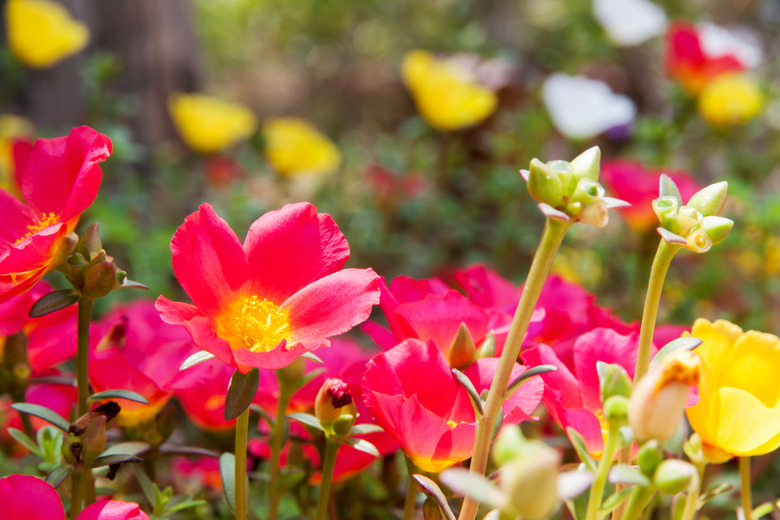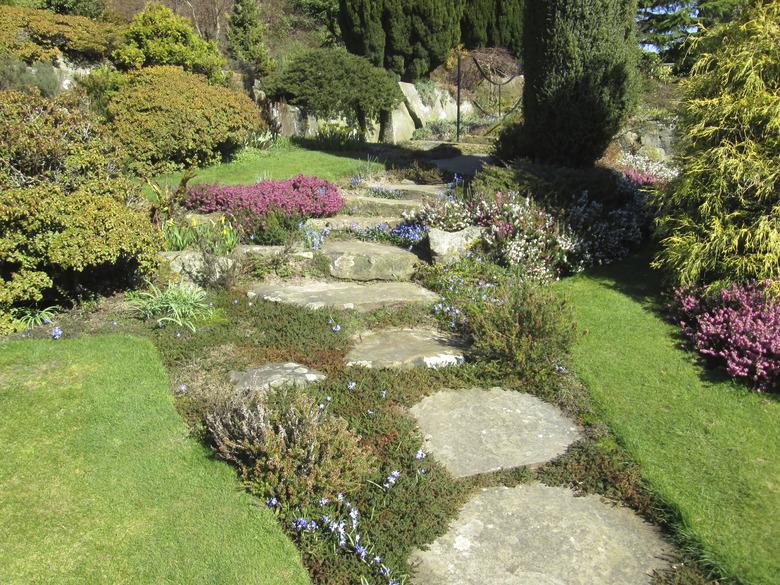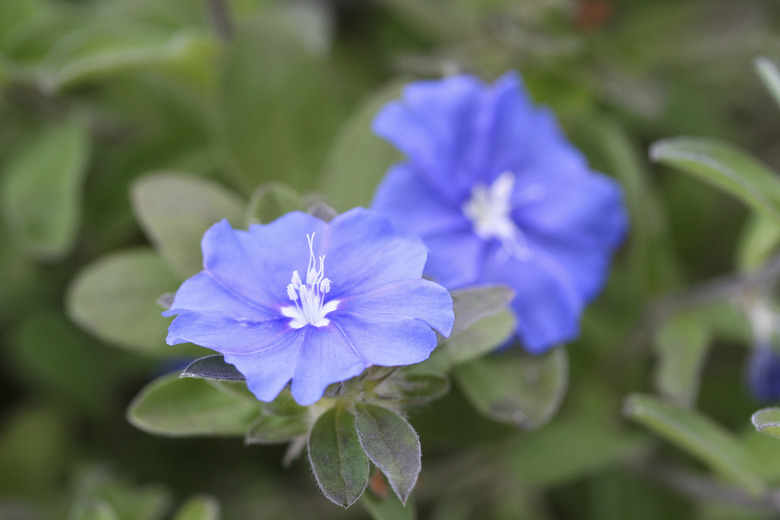The Best Ground Covers For A Sunny Area
Shading out weeds, covering bare soil and providing a visual link between other plants and a habitat for beneficial insects, ground covers are low, spreading plants. Most ground cover plants are under 3 feet tall. They may be annual or perennial plants, and they may drop their leaves at the end of the growing season or they may be evergreen. Sun-tolerant ground covers can abide at least six hours of direct sunlight every day, without leaves becoming scorched or flower colors fading.
Annual Plants
Annual ground covers offer the option to resow or replace the plants after one year, because these ground covers fade away at the end of the growing season.
Creeping zinnia (Zinnia angustifolia) bears bright orange, daisylike blooms summer through fall on plants that grow 9 to 18 inches tall and 9 to 12 inches wide. Cultivars of this plant feature flowers in shades of white, pink, red orange and yellow. The leaves are narrow and appear on hairy, branching stems. Moss rose (Portulaca grandiflora) is named for its roselike blooms that appear summer through fall on mosslike foliage. Growing 3 to 9 inches tall and 6 to 12 inches wide, white, yellow, red, rose, orange and pastel-shaded cultivars are available.
Tip
Moss rose sometimes self-seeds. If you don't want this plant to return, remove the flowers before they set seed.
Low-Growing
Low-growing ground cover plants provide a carpet of leaves and stems and sometimes flowers, too.
**Wormwood 'Tiny Green'** (Artemisia 'Tiny Green') offers a dense mat of olive green foliage and yellow summer flowers. Hardy in U.S. Department of Agriculture plant hardiness zones 5 through 9, 'Tiny Green' grows 3 inches tall and 3 to 18 inches wide.
**Caucasian stonecrop 'John Creech'** (Sedum spurium 'John Creech') features mats of creeping stems and small, scalloped leaves. In fall, star-shaped pink flowers appear above the leaves. Growing up to 3 inches tall and 3 to 12 inches wide, 'John 'Creech' is hardy in USDA zones 3 through 8.
Medium Height
Ground cover plants that grow 6 to 18 inches tall create a visual link between taller-growing perennials and shrubs in a mixed bed or border.
Prairie poppy mallow (Callirhoe alcaeoides 'Logan Calhoun') grows 6 to 12 inches tall and 6 to 36 inches wide and is hardy in USDA zones 4 through 9. Featuring hairy, segmented leaves on mounds of sprawling stems and pure white summer flowers, it spreads indefinitely but isn't invasive.
Tip
Pull up 'Logan Calhoun' stems that spread farther than desired.
Evolvulus (Evolvulus glomeratus) is a trailing-stemmed, sprawling ground cover plant that grows 9 to 18 inches tall and 2 to 3 feet wide. Hardy in USDA zones 8 through 11, evolvulus bears cup-shaped blue flowers spring through fall.
Tall Ground Covers
Tall ground cover plants provide height and can fill large areas of the garden.
Aromatic aster (Symphyotrichum oblongifolium) grows 1 to 3 feet tall and wide, and offers yellow-centered, violet-blue, daisylike late summer flowers, which are attractive to butterflies. Aromatic aster is named for its blue-green leaves, which give off a fragrance when crushed. This plant is hardy in USDA zones 3 through 8. Prairie phlox (Phlox pilosa var. ozarkana) bears tubular, dark rose-lavender spring blooms, and is hardy in USDA zones 4 through 9. Growing 1 to 2 feet tall and 1 to 1 1/2 feet wide, prairie phlox also features lance-shaped leaves up to 3 inches long.
Warning
Prairie phlox can spread rapidly through shoots that spread over the ground and grow into new plants. Check the plant every month during the growing season and pull up any new plants that appear where they aren't wanted.


